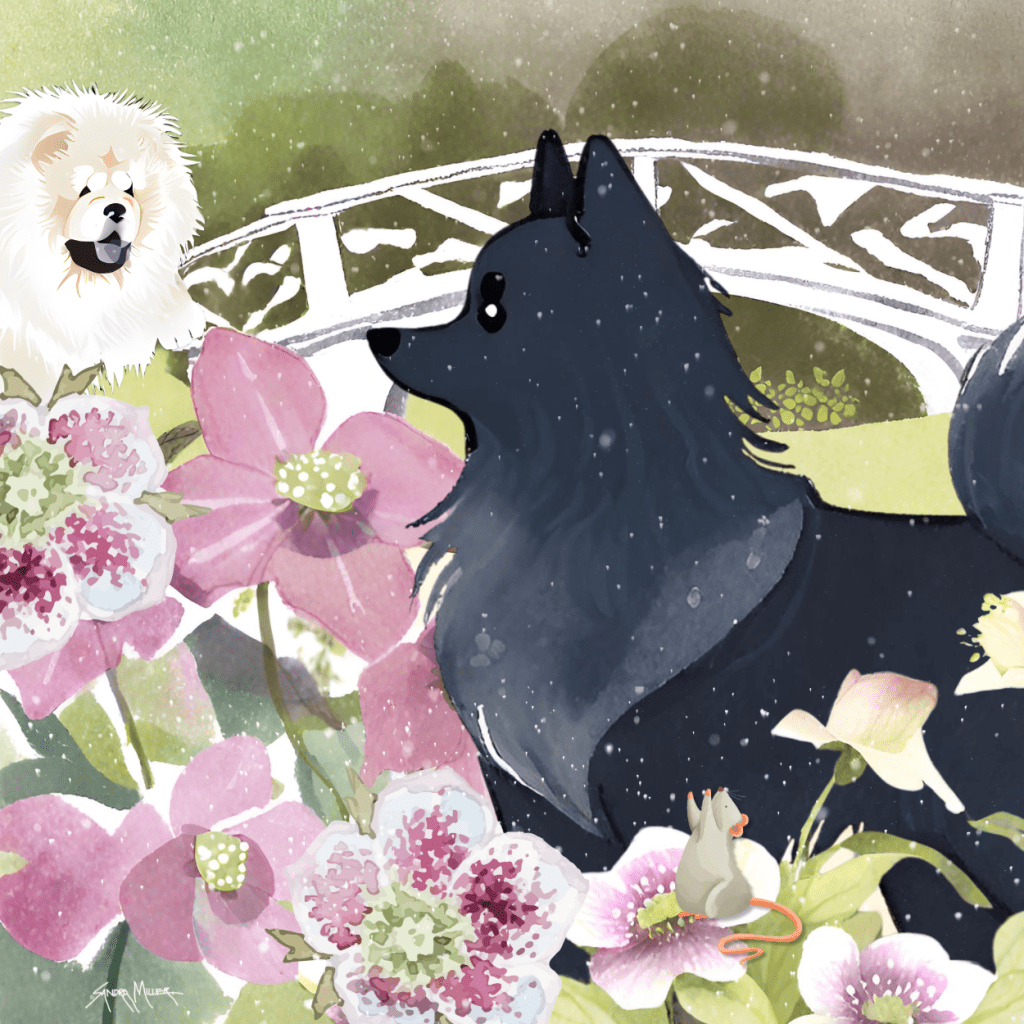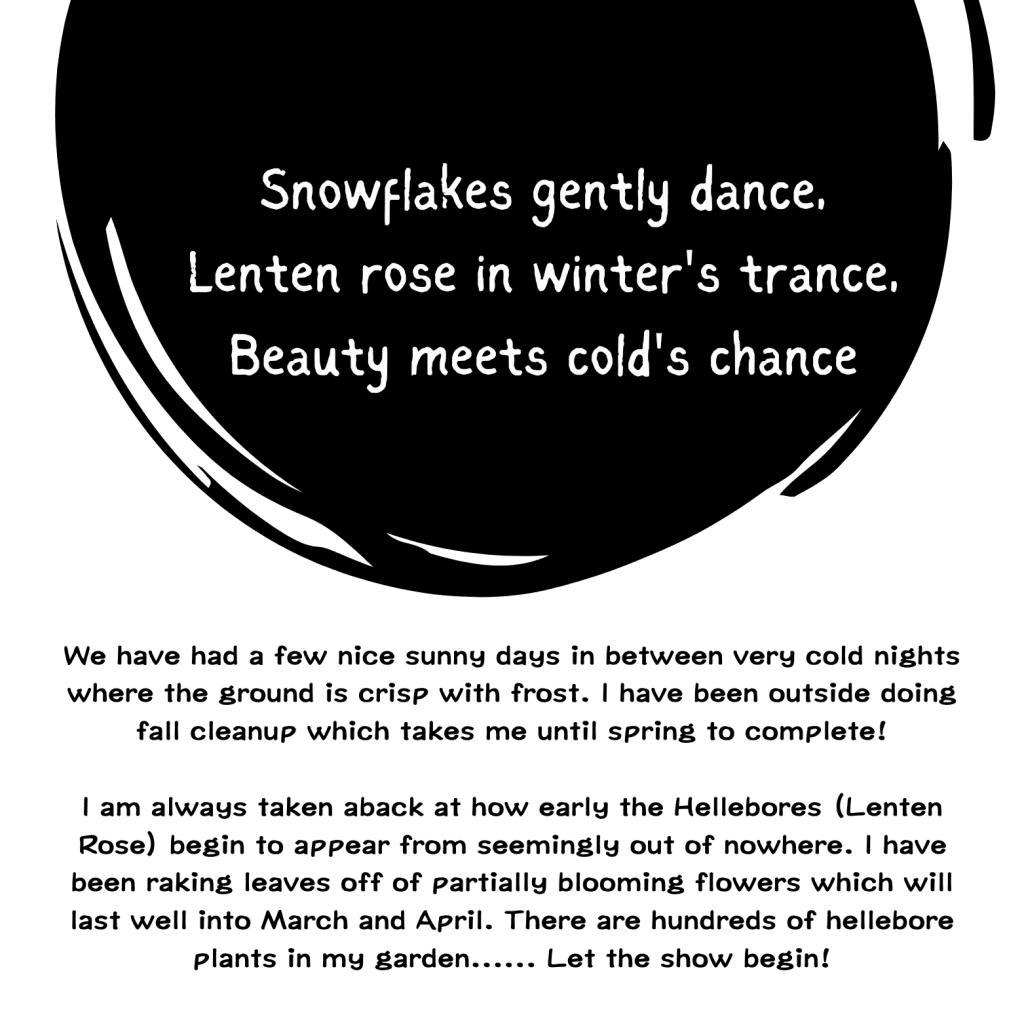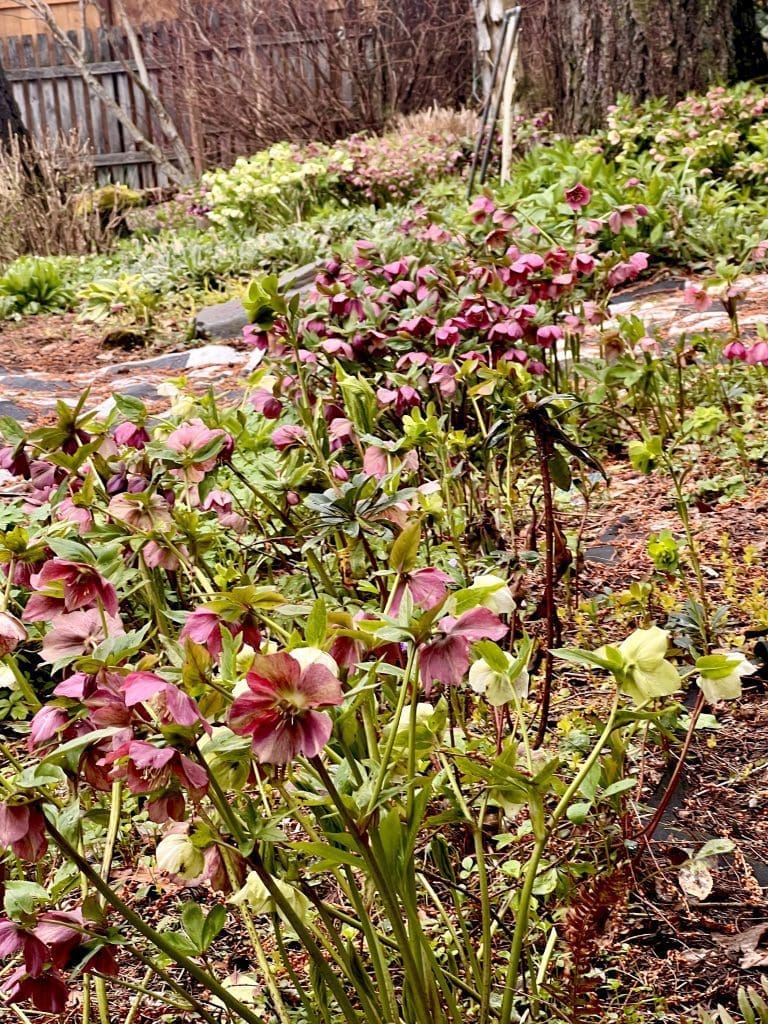
HAIKU by Ihana


Above is the way the flowers are best displayed. In a low shallow dish or even a bird bath outdoors. The nodding blooms are always facing downward on the plant which hides their beautiful faces

Above photo was taken last year shortly after Christmas which looks very close to how far along my hellebores are today. These buds are just starting to open. Living in a more temperate climate in Oregon we are treated to a much earlier show than the colder parts of the country.
Hellebores, including the Lenten Rose (Helleborus orientalis) and Christmas Rose (Helleborus niger), have a rich history intertwined with folklore and symbolism. Here are some aspects of the lore behind hellebore plants:
Medieval Medicinal Beliefs: In medieval times, hellebores were believed to have medicinal properties, and they were often used in various remedies. However, it’s crucial to note that many hellebores, including those used historically, are toxic. The use of these plants in medicine was based on the belief in their purgative qualities.
Christmas Rose and the Nativity: The Christmas Rose (Helleborus niger) has a particular association with the Christmas season. According to European folklore, the plant was said to have sprung up from the tears of a young girl who had no gift to present to the baby Jesus in Bethlehem. The Christmas Rose was believed to be a miraculous and precious gift.
Warding off Evil Spirits: In some traditions, hellebores were thought to possess protective qualities and were planted around homes to ward off evil spirits. This belief might stem from the plant’s toxic nature, as it could be seen as a deterrent against malevolent forces.
Symbol of Serenity: Hellebores, with their delicate nodding flowers, have also been associated with tranquility and serenity. The plant’s ability to bloom during the winter months, when many other plants are dormant, contributes to its symbolic representation of hope and resilience.
Lenten Rose and the Lenten Season: The Lenten Rose (Helleborus orientalis) is named for its association with the Christian season of Lent, which precedes Easter. The plant’s early bloom during late winter to early spring aligns with the Lenten period, symbolizing rebirth and renewal.









Leave a Reply